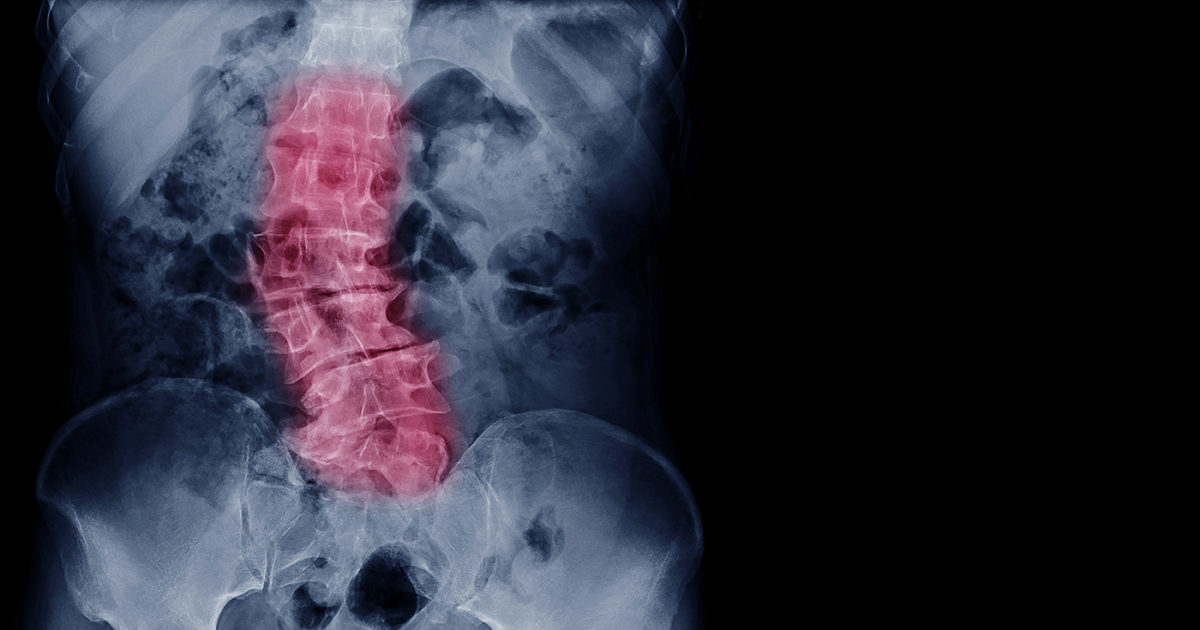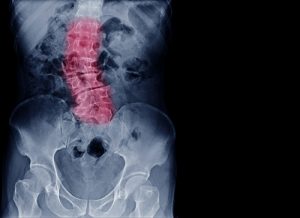
Scoliosis has many faces and just as many treatment options
Scoliosis is one of the most common types of spinal deformity. It’s an abnormal curvature of the spine either front-to-back or side-to-side. Although it sounds scary, a scoliosis diagnosis is not a guaranteed ticket to the operating room for spinal surgery. There are multiple types of scoliosis and a wide range in how they affect people.
For some, scoliosis won’t progress beyond a slight painless curve of the spine, and it won’t ever progress. For others, scoliosis can become so extreme it interferes with lung capacity, or causes extreme pain in the back or legs. Each scoliosis case is unique, so there is no one-size-fits-all treatment.
“Surgery is a last resort”
Because the needs of scoliosis patients can vary widely, OSF HealthCare Illinois Neurological Institute provides a wide range of services. This includes physical therapy, epidurals for pain management, nonsurgical spine specialists and world-class neurosurgeons who specialize in spinal conditions, when all other options are exhausted.
 “Surgery is a last resort,” said Daniel Fassett, MD, MBA, a neurosurgeon who specializes in spinal conditions for Illinois Neurological Institute. “In general, staying in as good of shape as possible is the best thing you can do to keep the scoliosis from getting worse and prevent symptoms. However, a lot of spinal conditions are genetic, so even athletes can suffer from scoliosis.”
“Surgery is a last resort,” said Daniel Fassett, MD, MBA, a neurosurgeon who specializes in spinal conditions for Illinois Neurological Institute. “In general, staying in as good of shape as possible is the best thing you can do to keep the scoliosis from getting worse and prevent symptoms. However, a lot of spinal conditions are genetic, so even athletes can suffer from scoliosis.”
“When you’re talking about a spinal deformity, you’re looking at a fairly large surgery and there are going to be long-term changes and sacrifices as a result. We’re talking about fusions in most cases, where screws and rods are placed into the spine to hold it in position. There’s loss of flexibility. There’s the possibility of needing more surgery as they age because they could develop arthritis. Or maybe the fusion may not take. A certain area may not heal. Screws and rods could fracture later and life and need revision surgery.”
Not every scoliosis patient with back pain or leg pain is a candidate for surgery. There are many patients for whom spinal surgery would probably not alleviate their pain. Spine surgeons like Dr. Fassett screen patients thoroughly before performing surgery, and they won’t perform a fusion if they think it won’t succeed. They won’t put somebody through a painful surgery and recovery if it won’t lead to a reduction in that person’s pain.
Success rates are higher for patients with sciatica, or nerve pain, than with back pain patients. Surgery to relieve the compression on nerves causes the pain to go away reliably, according to Dr. Fassett. “Whereas with back pain, we will help some patients with back pain but not everyone.”
Managing scoliosis
For people who have scoliosis but suffer from minimal or no symptoms, Dr. Fassett recommends staying in shape, doing posture exercises and working on core strengthening.
If somebody starts having symptoms like back pain or leg pain, treatment options can include physical therapy, like core strengthening and posture work to help with nerve compression, or pain management.
Epidural injections to help with inflammation are common, and so are over-the-counter pain killers for mild to moderate pain. In general, it’s good to catch issues early so a care plan can be developed to prevent or slow the worsening of the condition.
“One thing I see a lot is patients with one leg longer than the other leg,” Dr. Fassett said. “Because of that, their pelvis tilts and their body is forced to develop a curvature to compensate, which results in more arthritis, and it kind of snowballs. If they found the issue earlier in life and wore a shoe lift, it would keep their pelvis symmetric and reduce the risk for scoliosis down the road.”
Scoliosis types
Idiopathic Scoliosis
The scoliosis the public is most familiar with is commonly seen in teenagers. Dr. Fassett believes there are probably some genetic factors that result in it. Basically, as the spine is growing, it starts to develop a curvature, which can increase during the spine growth phase. So if someone is still growing and they have a scoliosis – that needs to be watched closely.
Appearance can be a big concern for idiopathic scoliosis patients. Scoliosis can affect posture, make shoulders uneven, or because the development of a rib hump, where a person’s ribs protrude further on one side of their back than the other.
Congenital Scoliosis
A birth defect can result in a single malformed triangular vertebrae that causes a curvature in the spine.
“You could have a mild curve, and you could just watch it,” Dr. Fassett said. “But if pain develops, then surgery might be an option down the road.”
Neuromuscular Scoliosis
If somebody has a neuromuscular disorder, like cerebral palsy, the muscles may not work the same on both sides of their spine, so they can develop a severe curvature relatively early in life.
“The worry is a lot of the neuromuscular curves can become so severe they contort the rib cage, affecting the chest cavity and resulting in pulmonary changes, like changes in lung capacity. That is one of the main indications that surgery is necessary,” Dr. Fassett said.
Degenerative Scoliosis
“The one I most commonly see in my practice is called degenerative scoliosis,” Dr. Fassett said. “So as a person ages, arthritis can weaken their joints and result in curvature of the spine.”